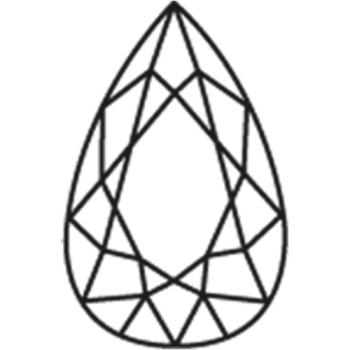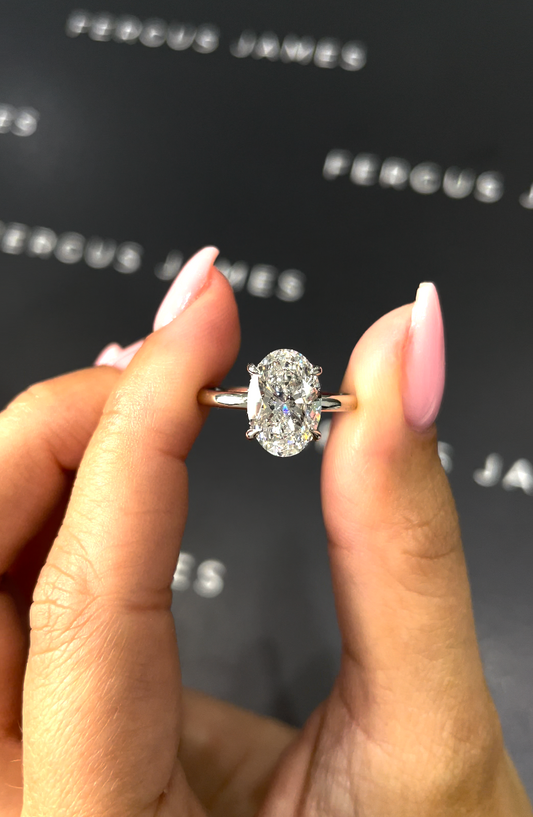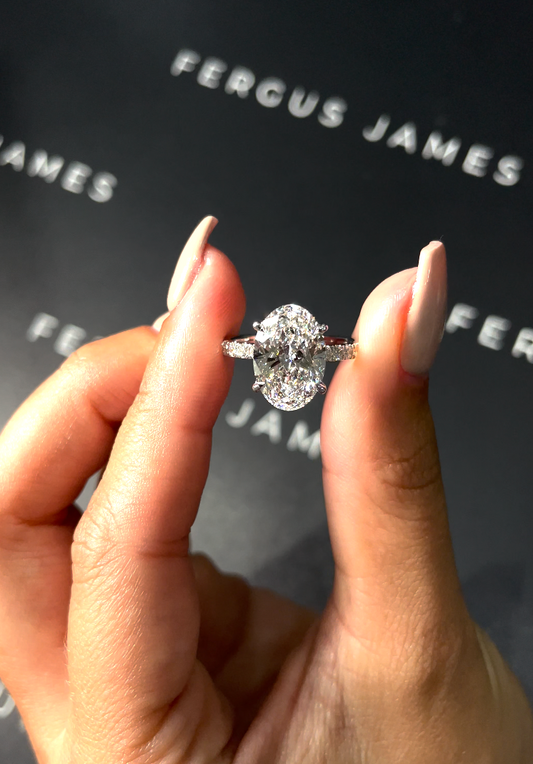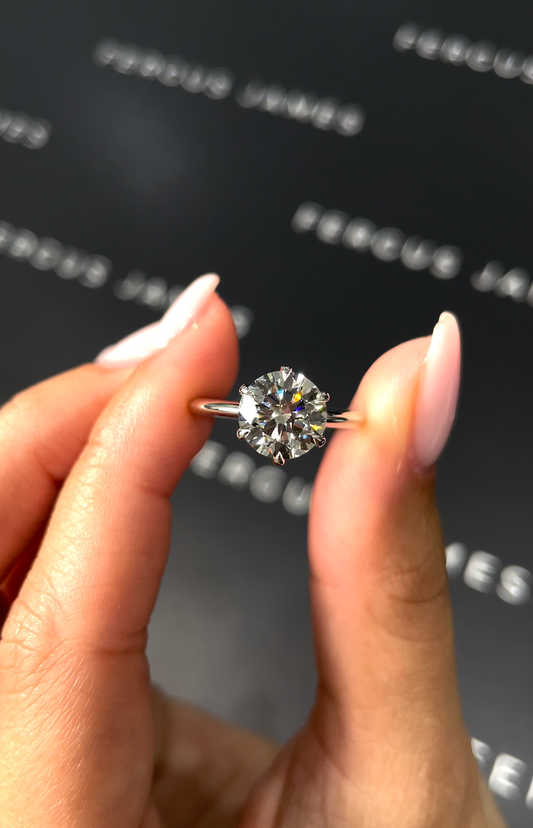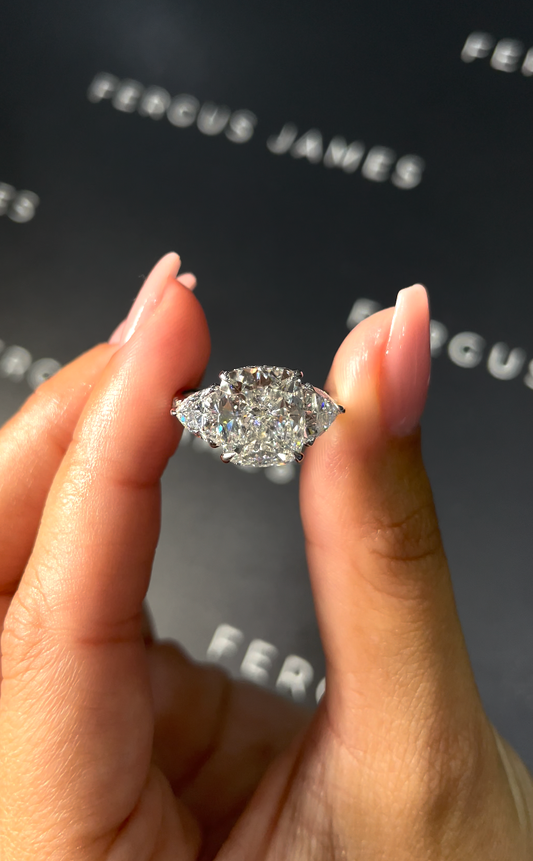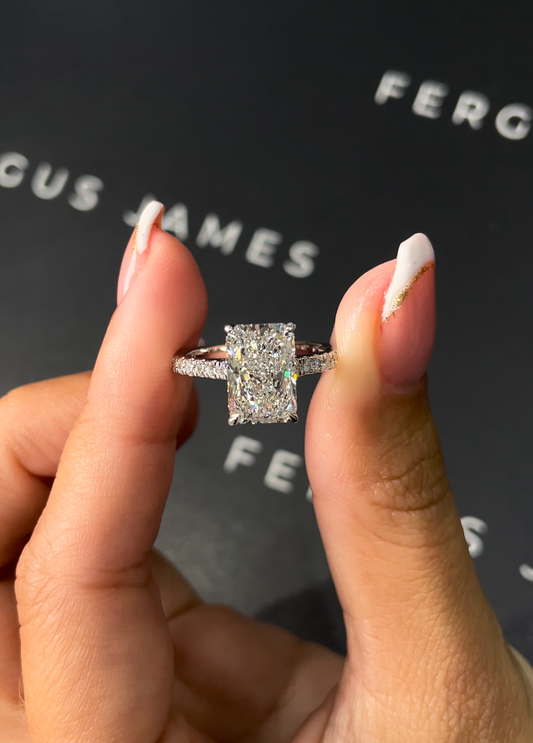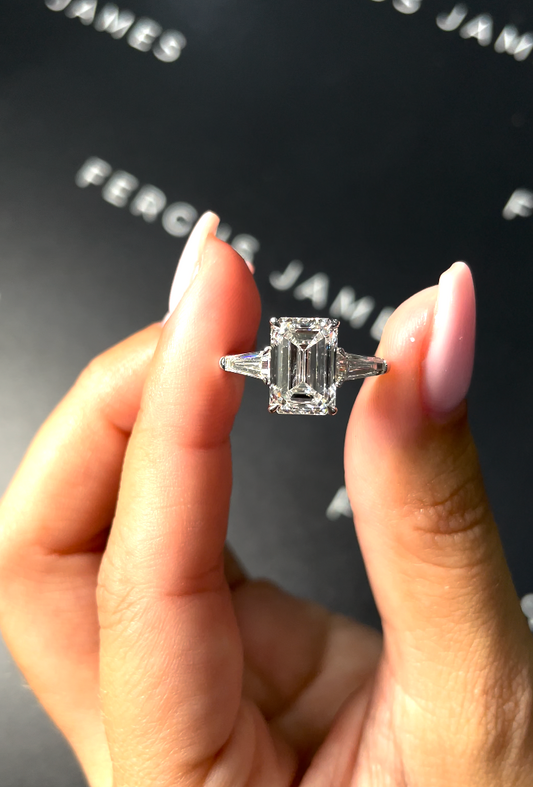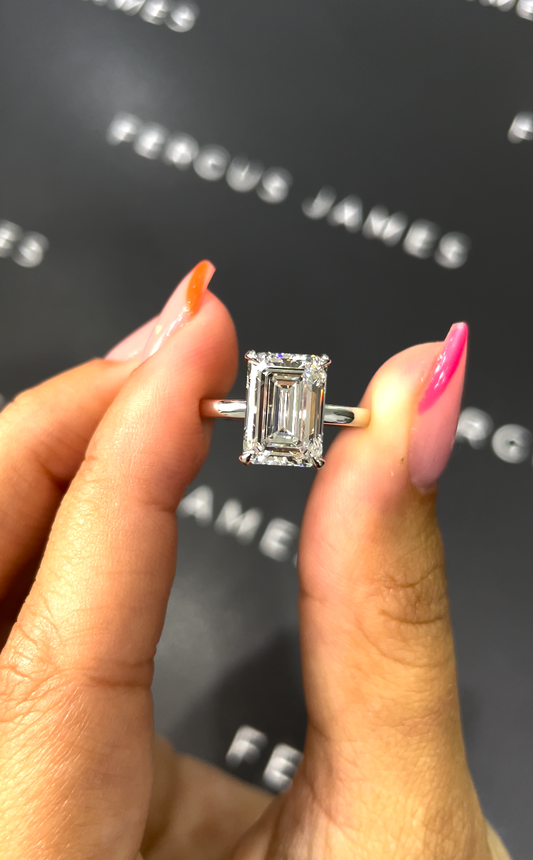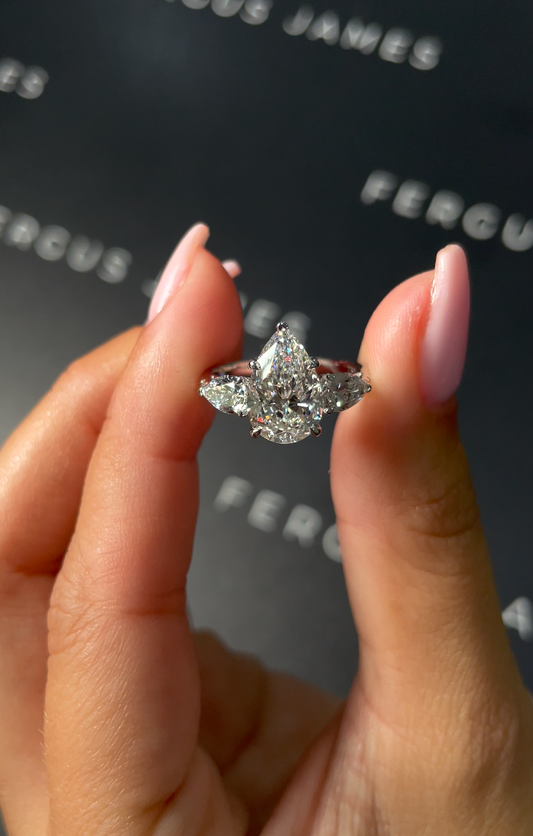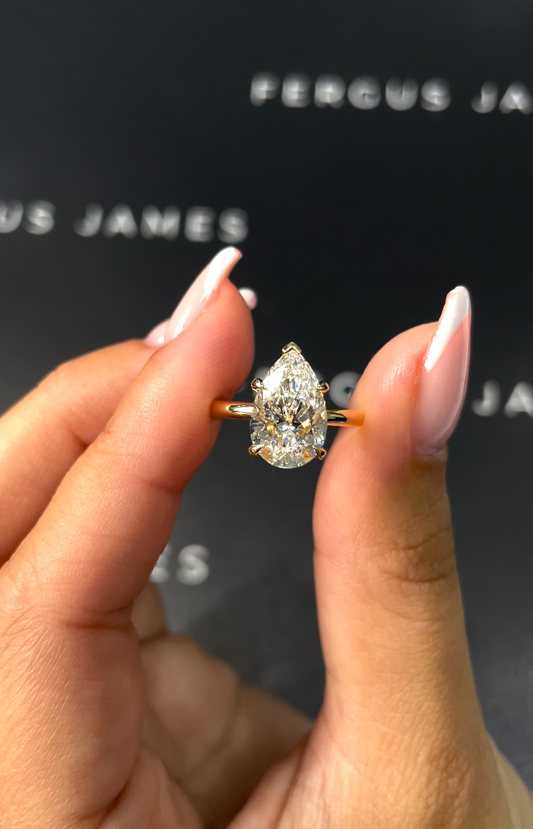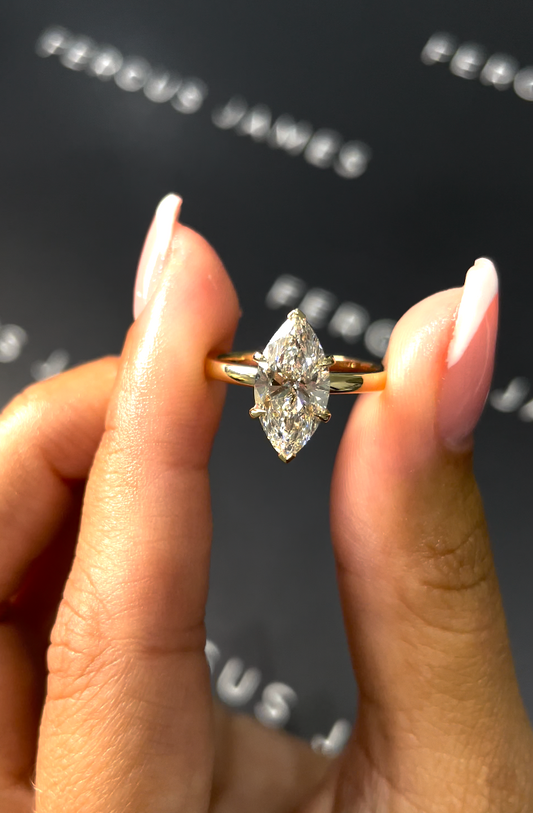Lab Grown Diamond Prices in 2026: What to Expect & Why They Vary
Understanding where lab grown diamond prices are heading can help you make smarter buying decisions—especially if you're planning to purchase a custom engagement ring or fine jewelry piece in 2026. As one of Dubai's leading custom jewelers, Fergus James works closely with both natural and lab grown diamonds. This gives us first-hand insight into how the market is shifting, why prices vary so widely, and what buyers can expect in the near future.


What Are Lab Grown Diamonds?
Lab grown diamonds are real diamonds created in a controlled environment using advanced technology that replicates the natural diamond-growing process. They share the same physical, chemical, and optical properties as mined diamonds—meaning they are equally brilliant, durable, and beautiful.
The main difference lies in how they're formed: natural diamonds are created over billions of years under extreme pressure and heat deep in the Earth's crust, while lab grown diamonds are produced in weeks using specialized machines.
This difference in origin influences not just price but also availability, sustainability, and buyer preference.
The Lab Grown Diamond Market Today
Over the last few years, lab grown diamonds have moved from a niche category to a mainstream choice. The technology behind their creation has improved rapidly, making production faster and more efficient. As a result, prices have gradually dropped while quality has risen.
In 2025, a 1-carat lab grown diamond typically costs between 70% to 85% less than a natural diamond of the same quality. That means a lab grown diamond of excellent cut, color, and clarity that might sell for around USD 1,500 could easily cost USD 5,000 to 7,000 if it were mined.
This price gap has made lab grown diamonds highly attractive for buyers who want luxury without overspending. However, it also means that price competition among retailers is growing—and this trend will shape how the market looks in 2026.
What to Expect from Lab Grown Diamond Prices in 2026
1. Overall Prices Will Continue to Decline Slowly
The production process for lab grown diamonds is becoming more efficient every year. As more manufacturers invest in large-scale facilities and technology becomes cheaper, the overall cost to create each stone will drop further.
By 2026, it's likely that small to medium-sized lab grown diamonds (under 1 carat) will see modest price reductions. The largest declines will probably occur in standard shapes and qualities—stones that can be mass-produced more easily.
2. Larger Stones Will Retain Their Value Better
Big lab grown diamonds (above 2 carats) are still more complex and expensive to produce, so their prices are likely to hold steady compared to smaller stones. Buyers seeking large center stones for engagement rings may see less price movement in 2026.
3. Quality Will Become a Bigger Price Divider
Not all lab grown diamonds are created equally. Two stones of the same carat weight can have vastly different values depending on their cut, color, and clarity. In 2026, as the market becomes more crowded, the best-quality lab grown diamonds will stand out more and command higher prices relative to lower-grade stones.
Retailers that focus on premium cuts, superior polishing, and top color grades will likely maintain stronger pricing, while mass-market sellers will compete heavily on lower prices.
4. Retail Markups Will Shrink
As information becomes easier to access and online platforms make comparison shopping simpler, retail markups will tighten. Buyers will have more transparency about what a lab grown diamond should cost based on size and quality.
This is good news for consumers: you'll see fairer pricing, less variation between sellers, and more value-focused offers from reputable jewelers like Fergus James.
5. Regional Differences Will Be More Noticeable
Global diamond prices are always affected by exchange rates, import taxes, and local market conditions. Dubai, for instance, remains one of the most competitive places in the world to buy high-quality diamonds because of its favorable tax environment and access to international supply.
By 2026, regional variations will likely become more distinct. Buyers purchasing lab grown diamonds in the UAE, Europe, or the US may see small price differences due to logistics and local demand.
Why Lab Grown Diamond Prices Vary
There are several key reasons why two seemingly similar lab grown diamonds can have very different prices:
Carat Weight
Larger diamonds are rarer and harder to produce, which drives their prices up exponentially. A 2-carat lab grown diamond doesn't just cost twice as much as a 1-carat—it can cost three or four times more depending on the grade and cut.
Cut Quality
The precision of a diamond's cut determines how much light it reflects and how brilliant it appears. A perfectly cut lab grown diamond can look dramatically brighter than one with a mediocre cut. That brilliance adds value and affects price significantly.
Color and Clarity
Lab grown diamonds range from completely colorless (D) to faintly tinted (J or K). Likewise, clarity varies based on how many internal marks or inclusions a stone has. The higher the grade, the rarer and more valuable the diamond.
Type of Growth Method
There are two main methods for creating lab grown diamonds: HPHT (High Pressure High Temperature) and CVD (Chemical Vapor Deposition). Each has its advantages, but certain buyers prefer CVD stones for their ability to produce more consistent results in higher colors and clarities.
Certification and Grading
Diamonds that are graded by recognized labs such as IGI or GIA are generally worth more than uncertified stones. Certification verifies that a diamond's attributes are accurately represented, giving buyers confidence and improving resale potential.
Retailer Reputation
A trusted jeweler adds value by ensuring quality control, ethical sourcing, and precise craftsmanship. At Fergus James, every lab grown diamond is individually inspected, graded, and paired with a certificate, so clients know exactly what they're paying for.

What Buyers Should Do in 2026
Here's some expert advice to help you get the best value when purchasing a lab grown diamond in 2026:
1. Focus on Cut Before Carat
The cut has the biggest visual impact. A smaller, perfectly cut diamond often looks larger and more brilliant than a bigger one with an average cut.
2. Choose Trusted Retailers
Always buy from a jeweler who provides transparent grading, clear certificates, and complete information about the diamond's growth method and origin.
3. Balance Quality and Size
If your goal is the best sparkle and presence for your budget, aim for slightly smaller sizes with excellent cut, color, and clarity grades.
4. Request a Certification Report
Never buy a lab grown diamond without a proper grading report. Certification ensures that what you're paying for is genuine and accurately described.
5. Consider Long-Term Value
Lab grown diamonds are ideal for those focused on beauty and budget, but they generally hold lower resale value than natural diamonds. If you're buying purely for aesthetic and emotional reasons, they are a perfect choice.
6. Leverage Dubai's Diamond Market
Dubai remains one of the best places globally to buy both natural and lab grown diamonds. Lower taxes, direct sourcing, and strong international trade connections make it easier for buyers to find exceptional value here.
Why Choose Fergus James for Lab Grown Diamonds
At Fergus James, our goal is to combine modern diamond innovation with timeless design. Every lab grown diamond we offer is hand-selected for exceptional quality and sparkle. We specialise in crafting bespoke engagement rings, wedding bands, and fine jewelry pieces designed to reflect your personal story.
Here's what sets us apart:
• Access to premium lab grown diamonds from leading producers.
• Full transparency on grading, pricing, and certification.
• Custom design services allowing you to create any setting, from classic solitaires to intricate halo or three-stone designs.
• Expert guidance from experienced diamond specialists based in Dubai.
The Outlook for 2026
Lab grown diamonds will continue to dominate the modern jewelry market. As technology advances, prices will become even more competitive, giving buyers access to bigger, better-quality stones without the premium of mined diamonds.
For couples planning engagements or special gifts in 2026, this is the perfect moment to explore lab grown options. They deliver the same sparkle, durability, and beauty as natural diamonds—just at a more accessible price point.
When you buy from a reputable jeweler like Fergus James, you're not only getting an exceptional stone but also peace of mind, craftsmanship, and lasting value.




